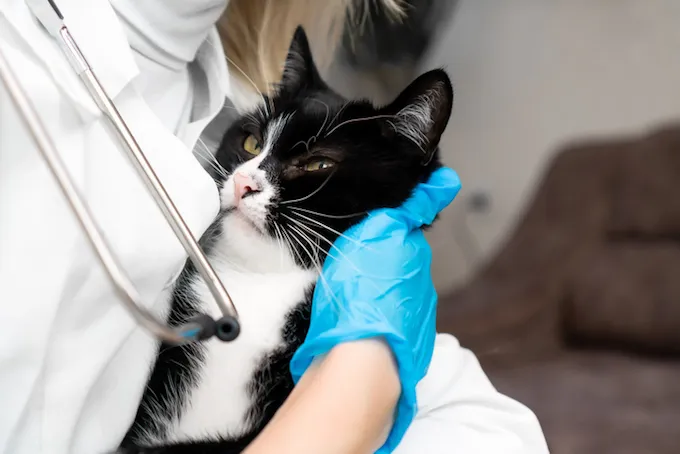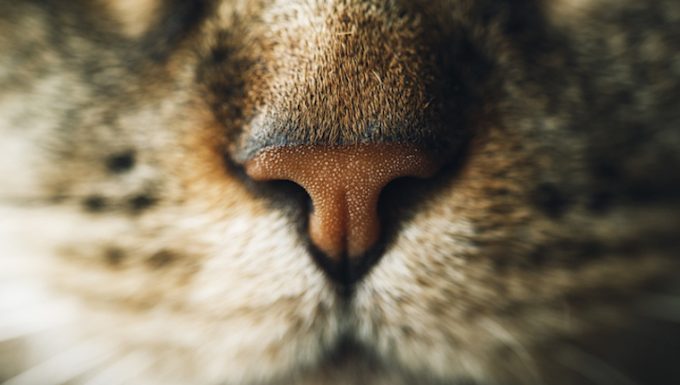Nasal dermatoses in cats is a condition that occurs on the skin of a cat’s nose. Various infections are often the cause of the condition.
Generally, you might also hear the condition referred to as nose skin disease.
Thankfully, in some cases, the condition clears up on its own.
If you see the signs of nasal dermatoses in your cat, then get to a veterinarian for a proper diagnosis and treatment.
Here’s what you should know about the symptoms, causes, and treatments for the condition.
Symptoms of Nasal Dermatoses in Cats
The condition produces a wide range of symptoms that affect a cat’s nose. For example, some of the common symptoms include:
- Hair loss
- Ulcers
- Crusty skin
- Skin turning red
- Pigment loss
- Nodules with pus
Causes of Nasal Dermatoses in Cats

The cause of the condition can be one of a number of things. For instance, some of the most common causes include:
- Bacterial infection
- Mites
- Fungal infection
- Immune system issues
- Reaction to medication
- Trauma
- Sunburn (solar dermatitis)
- Being stung by a bee or wasp
Treatments for Nasal Dermatoses in Cats
Firstly, your vet will ask about your cat’s symptoms. Secondly, your vet will ask about any recent circumstances that could have caused the condition.
Thirdly, skin samples from the nose are usually taken. These can be analyzed to confirm the condition.
Generally, treatment will focus on the underlying cause of the condition. For instance, if there is an infection, medication can be used.
As always, if your vet prescribes your cat any medicine, make sure to stick to the correct dose and frequency instructions. Also, complete the full course of medicine.
In other cases, a surgery can be required. This is to remove any lesions.
Thankfully, in some cases the condition can clear up on its own.
In general, it’s best to avoid letting your cat become exposed to harsh sunlight during peak daylight hours. You can read more about sunburn and cats here.
Have you ever cared for a cat who suffered from this condition? How did your vet help your cat recover? Let us know in the comments section below.









